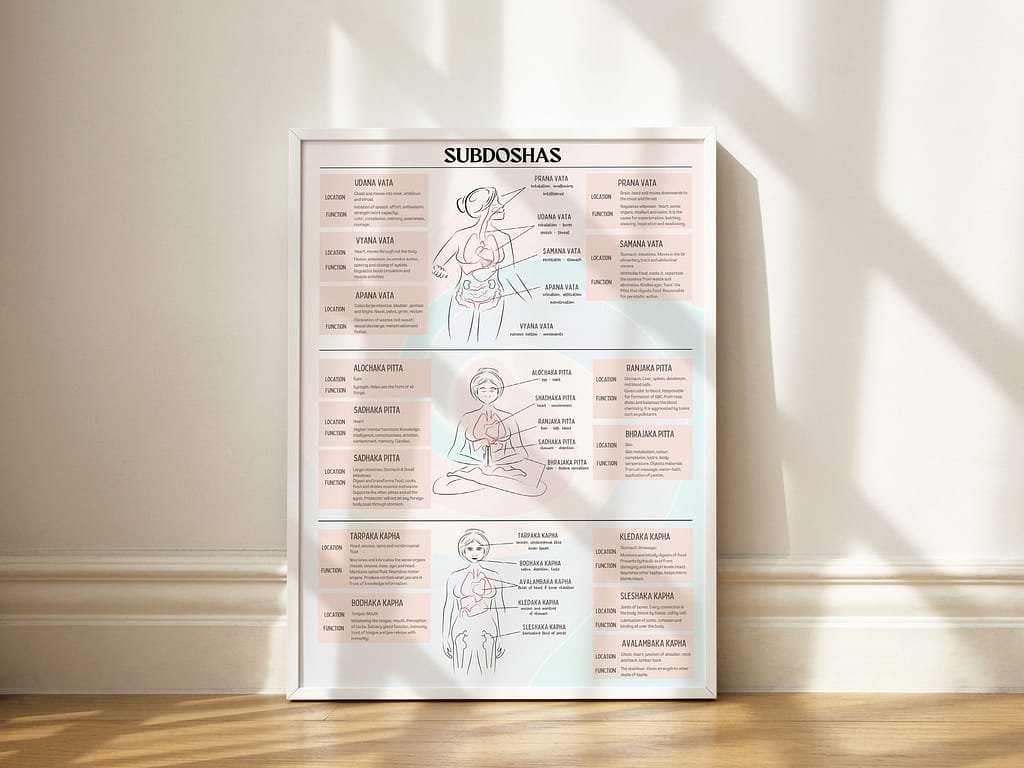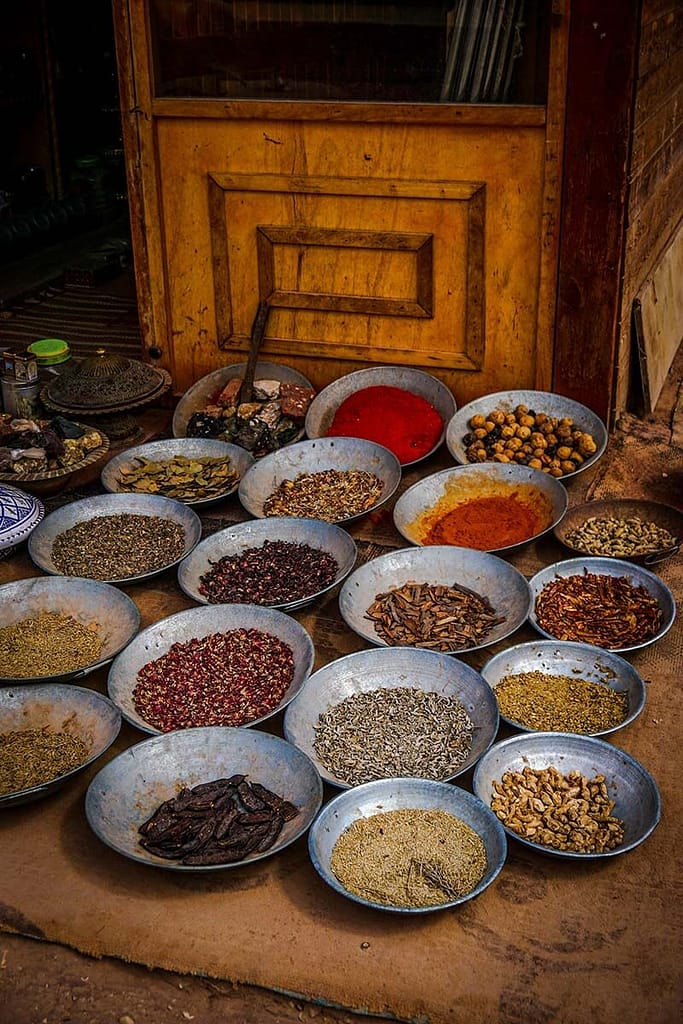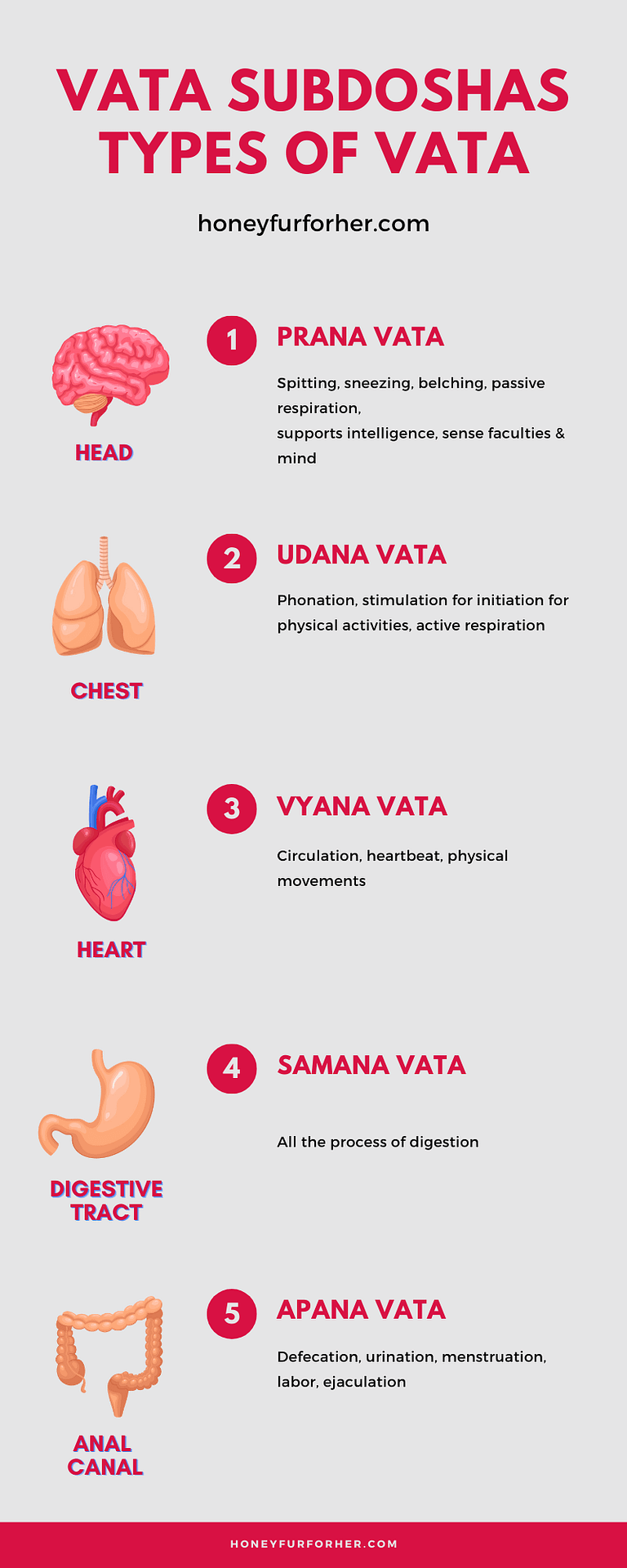Medical Reviewer: Dr Surabhi Rawat
The world is classified into five elements that regulate and determine the characteristics, the functionality and the dynamics between all life.
Akasha (Space)
Air (Vayu)
Fire (Agni)
Water (Jala)
Earth (Prithvi)
Ayurveda defines the Doshas as the state of equilibrium between these elements.
The Doshas. The life forces that govern one’s mental and bodily functions.
The very fundamentals of Ayurveda constitute the three doshas: Vata, Pitta and Kapha. These three doshas are the foundations for life and a balance between the three determines the well-being, even on a cellular level.
The Kapha Dosha is the equilibrium between the Earth and Water elements. The Pitta Dosha is the equilibrium between the Fire and Water elements. And the Vata Dosha is the equilibrium between the elements of Space and Air.
A balanced Vata is of great importance. Oftentimes, the Vata in equilibrium also results in the balance of the Pitta and Kapha doshas. Vata is also referred to as the King of the doshas for the same reason. It is “one which moves things” and is responsible for movement and mobility in the body, be it the movement of the eyelids or the movement inside the respiratory and digestive systems.

A balanced Vata induces creativity, active lifestyle, movement and the natural predisposition of an individual to express themselves and communicate. However, an aggravated Vata would result in the bouts of anxiety and disorders characterised as dryness such as constipation or dry skin.
Vata’s qualities revolve around dry, cold, rough, light, subtle and mobile characteristics. An individual with predominant Vata will display these characteristics and reflect them in both their physical and psychological states. I have a previous blog post, which will help you understand if you are one of the people with a vata body type.
There are, however, subtypes of Vata.
- Prana Vata
- Udana Vata
- Vyana Vata
- Samana Vata
- Apana Vata
These different types of vata are centred at chief locations in the body. But that does not mean that they cannot be found in other locations. Vata sets everything into motion and is directly related to the Kapha and Pitta functioning in the body. It is an interdependent network and the dynamic equilibrium within it is what ensures the overall wellbeing of an individual.
1. Prana Vata (Specifically Moving Vata)
Prana Vata is centred in the head and moves through to regions of the throat and the chest. This Vata type regulates characteristics such as the will of an individual, the sensory perception, intellect, the heart and the vision. Actions such as sneezing, swallowing, expectoration, belching and such are caused by the Prana Vata. This Vata type bridges the mind and the heart of an individual.
An imbalance in the Prana Vata can be caused due to bad sleep cycles or lack of sleep and result in confusion, nausea and issues with sensory perception as well.
Regular meditative sessions, Pranayama exercises and Yoga greatly help with the restoration of balance in this Vata type.
2. Types Of Vata: Udana Vata (Upward Vata)
Udana Vata is centred in the chest and branches into the throat, umbilicus and the nose. It regulates characteristics such as effort, strength, colour, complexion, memory, enthusiasm and the initiation of speech in an individual. It is also related to breathing and respiratory activities in the body, especially exhalation.
An imbalance in this Vata type could be a result of the consumption of a large amount of food that is raw, light, bitter, dry and cold and also exposure to cold environments. Signs of imbalance are seen in the form of tightness in the chest, stammering or stuttering, irregularities in breathing, indecisiveness, congestion and the inability to express oneself.
Deep breathing exercises, yoga and meditation are of immense help to restore balance in this Vata type.

3. Vyana Vata (Pervasive Vata)
Vyana Vata is centred in the heart and branches throughout the entire body and is also characterised with speedy movements and consciousness. It is responsible for locomotive functions of the body such as the movement of the eyelids, blood circulation and dexterity in flexion and extension movements of the limbs nerve impulses and emotions.
An imbalance in this Vata type would result in irregular blood pressure disorders, anxiety, palpitations, cramps in the muscles and tremors.
Activities like meditation, pranayama and yoga and massage therapy also help restore balance to this Vata type.
4. Samana Vata (Equally Moving Vata)
The Samana Vata is centred in the digestive system below the chest and above the navel and branches into the gastrointestinal tract. It aids in the reception of food, in the digestive process and division of food for the purpose of assimilation and passage into the excretory system.
An imbalance in the Samana Vata can result in the failure to assimilate the food properly. It can also result in indigestion, diarrhoea, constipation, bloating, gastric disorders and leaky gut. A balanced diet along with cumin and coriander can also help restore balance in this Vata type.
5. Types Of Vata: Apana Vata (Downward Vata)
The Apana Vata is centralized in the large intestine and branches into the waist, bladder and genital areas. It regulates the excretory processes and is also responsible for functions such as menstruation, ejaculation, childbirth, urination and excretion. It also strengthens the intestinal walls and regulated the peristalsis movements in the body.
An imbalance in the Apana Vata can lead to constipation, diarrhoea, irregularities in bladder functions and menstrual issues too.
Inclusion of sesame oil in a well-balanced diet immensely helps to restore the balance in this Apana Vata type.
Types Of Vata | Seat | Main Function |
Prana Vata | Head | Spitting, sneezing, belching, passive respiration, supports intelligence, sense faculties & mind |
Udana Vata | Chest | Phonation, stimulation for initiation for physical activities, active respiration |
Vyana Vata | Heart | Circulation, heartbeat, physical movements |
Samana Vata | Digestive Tract | All the process of digestion |
Apana Vata | Anal Canal | Defecation, urination, menstruation, labour, ejaculation |
Source: Kerala Ayurveda Academy
How Does One’s Vata Become Imbalanced?
Vata imbalance can be caused by numerous factors such as the following:
- Consumption of foods that aggravate the Vata
- Stress eating during bouts of anxiety and depression.
- Irregular daily cycles or routines
- Improper bedtime
- Smoking cigarettes
- Consumption of alcohol, coffee and black tea
- Eating while on the run
The Recommended Diet For Vata Type Individuals

The diet is quite simple and balanced and includes whole grains and high moisture foods too. The medium of delivery of powders or medicines can be milk or water for Vata type individuals. A list of favourable ingredients is as follows:
- White meat such as poultry, seafood and eggs
- Milk products such as milk, yoghurt, ghee, paneer and alternatives such as soy milk and tofu
- Sweet fruits such as bananas, grapefruit, figs, mangoes, coconut, apples, pineapples, papayas, oranges, apricots, berries, plum, cherries, peaches and melons
- Spices such as pepper, chilli, turmeric and allspice must be consumed in small quantities. Cardamom, ginger and all other spices are considered favourable
- Vegetables must be well cooked and eaten warm
- Grains such as wheat, oats and rice are favourable
- Warm drinks such as spices teas and herbal infusions are recommended. Coffee, black tea and other carbonated beverages must be avoided as much as possible.
Safety Profile
The remedies and indications listed are generalized for Vata individuals. It is highly recommended that one go through an Ayurvedic consultation session with a certified practitioner before adopting methods and diets into routine life. Vata aggravations can also happen due to underlying causes or health concerns that must be taken up with a certified medical professional before adopting any lifestyle changes.
Did you find this post useful? Would you like to get back to it later? Save THIS PIN below to your Pinterest Natural Living or Ayurveda board!

